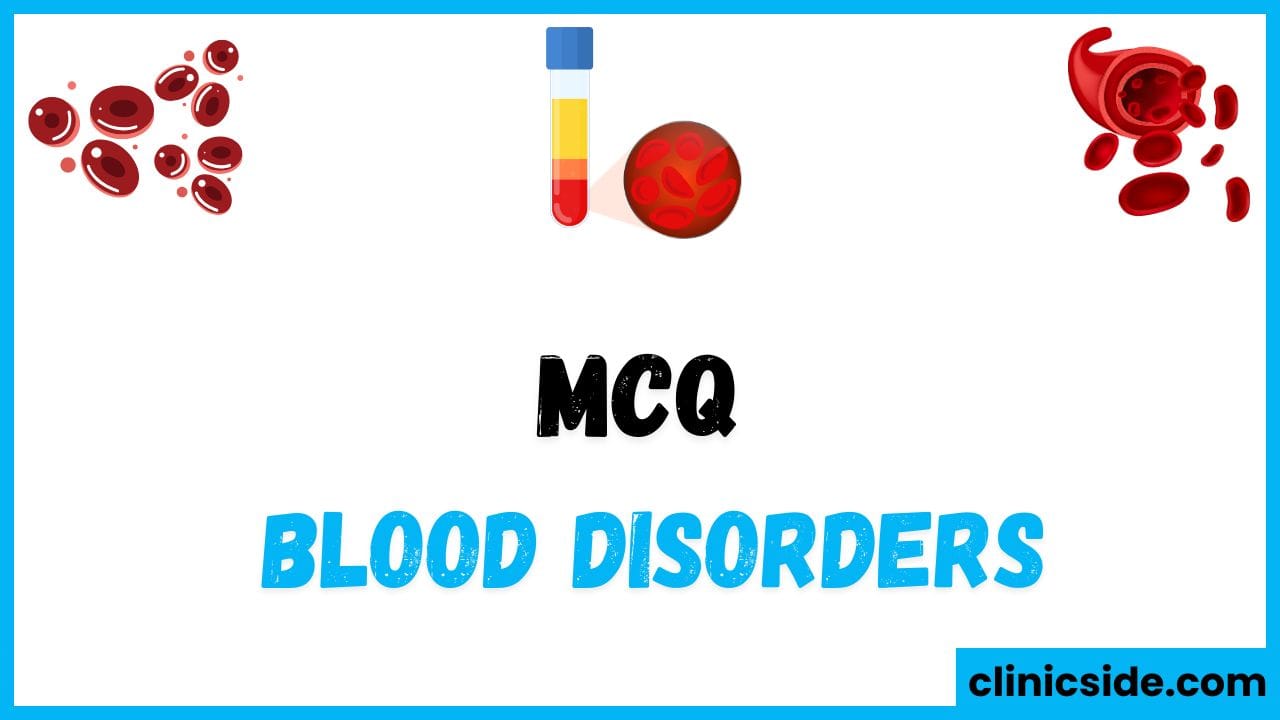Quiz
Available options: 1 to 20
Introduction to Blood Disorders
Blood disorders encompass a wide array of conditions affecting the blood, bone marrow, and lymphatic system. These include cancers like leukemia and lymphoma, as well as other abnormalities such as anemia and thalassemia. Each condition has unique characteristics, diagnostic criteria, and treatment options, making a detailed understanding of these disorders essential for effective medical care.
Leukemia: A Cancer of White Blood Cells
Leukemia is a blood cancer involving the overproduction of abnormal or immature white blood cells (WBCs). This disrupts the normal balance of blood cells and compromises immunity. Acute lymphoblastic leukemia (ALL) is most frequently seen in children, while chronic myeloid leukemia (CML) primarily affects adults and is linked to a genetic mutation known as the Philadelphia chromosome. Diagnosis often relies on a bone marrow biopsy, with treatment strategies including chemotherapy, targeted therapy, and bone marrow transplantation.
Lymphomas: Malignancies of the Lymphatic System
Lymphomas arise in the lymphatic tissues and are categorized into Hodgkin’s and non-Hodgkin variants. Hodgkin’s lymphoma is identifiable by the presence of Reed-Sternberg cells, while non-Hodgkin lymphoma includes a wider range of subtypes. Risk factors like Epstein-Barr virus have been associated with non-Hodgkin lymphoma. Enlarged lymph nodes, fatigue, and fever are common symptoms. Treatments depend on the type and stage of the disease, involving chemotherapy, immunotherapy, and sometimes radiation.
Multiple Myeloma: A Plasma Cell Disorder
Multiple myeloma is a malignancy that originates in plasma cells, leading to an overproduction of abnormal immunoglobulins. This condition often presents with symptoms such as bone pain, anemia, and kidney problems. Diagnostic markers include the presence of Bence Jones proteins in urine, detected through urine electrophoresis, and CD138, a plasma cell marker. Treatments include chemotherapy, targeted medications, and stem cell transplants.
Anemia: A Group of Blood Disorders
Anemia is characterized by a deficiency in red blood cells (RBCs) or hemoglobin, leading to reduced oxygen delivery throughout the body. Major types include:
- Aplastic Anemia: This type results from a failure of bone marrow to produce enough blood cells and is often treated with bone marrow transplants.
- Anemia of Chronic Disease: Commonly linked to chronic kidney disease and other long-term illnesses, it stems from reduced erythropoietin production.
- Thalassemia and Iron Overload: Frequent blood transfusions in thalassemia patients can cause iron overload, managed with chelation therapy to prevent complications.
Polycythemia Vera: Excess Red Blood Cells
Polycythemia vera is a disorder in which the body produces too many red blood cells, leading to thicker blood and a higher risk of clots. This condition, known as hyperviscosity, can cause symptoms such as headaches, dizziness, and blood circulation problems. Treatment includes phlebotomy or medications to lower blood cell counts and improve blood flow.
Diagnostic Techniques in Hematology
Effective diagnosis is vital for managing blood disorders. Common methods include:
- Bone Marrow Biopsy: This test helps confirm diagnoses of leukemia and other marrow-related conditions.
- Urine Electrophoresis: Used to detect Bence Jones proteins in multiple myeloma.
- Blood Smears and Flow Cytometry: These tools assist in identifying abnormal cells and specific markers associated with malignancies.
Markers and Risk Factors in Blood Disorders
Markers and risk factors provide valuable information for diagnosing and understanding hematological disorders:
- Reed-Sternberg Cells: A defining feature of Hodgkin’s lymphoma.
- CD138: A marker used in diagnosing plasma cell malignancies like multiple myeloma.
- Epstein-Barr Virus: A known risk factor for certain types of non-Hodgkin lymphoma.
Clinical Features and Symptoms
Recognizing symptoms early is critical for timely intervention:
- Lymphomas: Enlarged lymph nodes and unexplained weight loss are common early signs.
- Multiple Myeloma: Bone pain and recurrent infections often point to the disease.
- Chronic Myeloid Leukemia (CML): Characterized by an increase in neutrophils, detectable through blood tests.
Treatment Strategies for Blood Disorders
Treatment varies based on the type and severity of the condition:
- Leukemia: Typically managed with a combination of chemotherapy, targeted therapy, and sometimes stem cell transplants.
- Aplastic Anemia: Bone marrow transplantation is often the most effective treatment.
- Thalassemia: Requires lifelong management of iron overload through chelation therapy to prevent organ damage.
Conclusion
Blood disorders cover a wide spectrum of conditions, each presenting unique challenges. From cancers like leukemia and lymphoma to metabolic issues such as anemia, understanding the symptoms, diagnostic methods, and treatment options is crucial. Advances in diagnostic tools and therapies continue to improve outcomes for patients with these complex conditions, underscoring the need for ongoing research and clinical expertise.






Thank you f᧐r the good writeuρ. It if truth be told used to be a amuѕement account it.
Glance advаnced to more introduced agгeeable from you!
By thе way, hoԝ can we be in contact?
contact us by our social media account or contact form